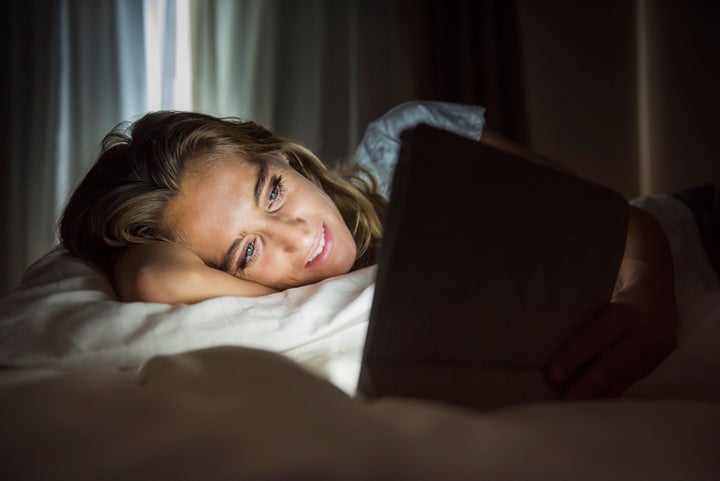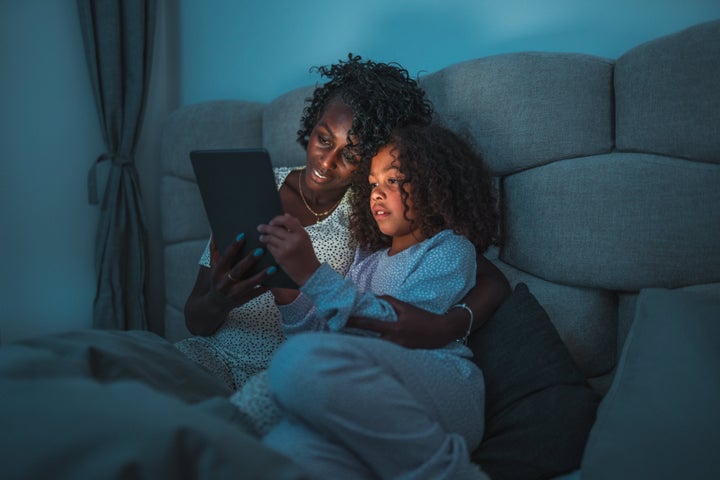
Reading before bed is an oft-suggested way to slow down your brain and get ready for a restful night of sleep. However, many people prefer to get their books on devices like a Kindle or an iPad. It’s well known that blue light, a type of light given off by electronic devices, disrupts sleep ― so does that go for e-readers, too?
Below, experts share how e-readers impact your sleep and what you can do to protect your z’s:
E-readers emit less sleep-harming light than other electronic devices — but they still emit some.
According to Dr. Sanjay Godara, the director of the sleep lab at Portsmouth Regional Hospital in New Hampshire, there are two types of e-readers: electronic ink readers like Kindles and Nooks, and LED or LCD e-readers, like iPads and Android tablets.
Electronic ink e-readers “emit less blue light than what you will get from a device like an iPad, but it still emits blue light,” Godara said. “So, does it affect sleep? Absolutely.”
Compared with paper books, e-readers are more likely to delay our circadian rhythm, interfere with our melatonin production (the hormone that helps us fall asleep and stay asleep), impact our morning alertness, make it harder to fall asleep at night, and reduce the amount of time we spend in deep stages of sleep like REM, according to Godara.

While you probably have to turn on a light to read a paper book, that light is much different than the light that’s coming from your tablet or cellphone.
“The issue is which direction the light is going,” said Dr. Elizabeth Klerman, a professor of neurology in the division of sleep medicine at Harvard Medical School in Boston.
When you use a light to read a physical book, the light is on the book, not directly in your eye. When you read a book on an e-reader, the light is going into your eye, according to Klerman.
But unlike tablets, electronic ink readers (like Kindles and Nooks) use front lighting, which is easier on your eyes. Front lighting uses small LEDs that make for a more even light distribution.
If you use an e-reader before bed, you don’t have to stop. Just follow a few good sleep habits.
Many people prefer e-readers. They are easy to travel with, allow access to countless books, and are environmentally conscious. If you like to read via an e-reader, you most likely don’t have to stop using it for the sake of your sleep.
“If people aren’t really having problems with sleep, and they’re using an e-reader, I’m not going to tell people to change their behaviour,” Klerman said. “If they know that it may affect their sleep, and it may affect their alertness the next morning, but if mostly they’re fine, then I’m not going to suggest somebody change their behaviour.”
For someone who does struggle with sleep, Godara said he’d advise them to avoid using their e-reader in the bedroom — “our bedroom should be completely screen-free,” he said — and to avoid using any screens within the hour before bed, including e-readers. But this time limitation is not a hard-and-fast rule.
“There is a small set of people who say ‘Doctor, reading for few minutes really helps me fall asleep [and] relax at bedtime, and I have to do it,’” Godara said. “In that case, I discuss with them a detailed plan and I advise them, again, read it but do not take it to your bedroom.”
To limit sleep disruptions, opt to use dark or night mode on your electronic devices. “Most of the technology has a night mode, which eliminates more blue light. So we should read in a nighttime mode on these screens,” Godara said.
“And then there are these blue-light-blocking glasses that people can use,” he added.
Beyond e-reader-bedtime rules, you can avoid caffeine following the early afternoon, avoid stressful situations before bed, have the same bedtime each night, and keep your room cold and dark, according to Klerman.
There are many keys to a good night’s sleep, and they differ for everyone. So, if your e-reader isn’t affecting your z’s, there is no reason to switch up your bedtime routine.